The layperson’s view of crisis management may be Scandal’s Olivia Pope, but the founder of crisis management was slightly less glamourous. The term itself was evolved from “issues management”, the turn of phrase coined by Howard Chase in 1976. While he may not have had Olivia Pope’s wardrobe, Chase revolutionized an aspect of communications that changed the fabric of public relations and affairs. His theory, that the public’s pressure would influence organizational and corporate change, was novel for its time but has now become an everyday reality for several industries, higher education among them.
As recently as the past ten years, crisis communications continue to evolve. Crisis communications professionals and firms were often brought in following super-sized PR disasters to message, manage, and minimize the fallout. While the role of crisis communicator still operates in this capacity, the practices have threaded their way into everyday PR work with the proliferation of news cycles and unceasing social media commentary. The reality of this shift in media consumption creates an environment where higher education faces mini crises on a daily basis. The key to effectively create crisis management strategies addresses both of these outcomes – extinguishing small issues before they grow, and planning and training for massive scale incidents that can only be conquered with preparation.
In the recent Higher Education Coffee and Conversation podcast episode, Mark Evilsizer, a longtime community college trustee, revealed some of the internal components that contribute to an effective crisis management response. And with more than 20 years of higher education communications experience, we’ve thrown what we consider to be the best practices that keep colleges in the spotlight for the right reasons.
INVOLVE THE RIGHT PEOPLE
When a crisis arises, many faculty, staff, and students will come forward with suggestions to address the issues. While an important aspect of crisis management is to listen with open ears, it is crucial to reserve the strategic messaging and decision-making to the communications team and relevant university leadership. According to Evilsizer, the collaboration of the Board, President, CEO, and Superintendents create a pipeline of how communications are prioritized by roles. At the crux of this funnel is the communications team, who guides and advises each group throughout the crisis response. “We’re very cognizant and appreciative of our communications director to help the Board and CEO orchestra public messages that go out to the media…and let them help us manage the messaging.
While leadership must worry about presence and perception, the communications team must be trusted to handle strategy. This is where many higher education institutions and other entities fall short. With too many cooks in the kitchen, messaging becomes disjointed, and employees or stakeholders go rogue.
A CRISIS IS INEVITABLE
The types of crises facing higher education is a seemingly never-ending list. As enrollment soars and institutions expand their footprint, opportunities for issues mount. Examples of what are now considered commonplace higher education crises include sexual assault and abuse, the threat of active shooters, diversity inequities and racism, and athletic and fraternity misconduct. And that doesn’t even address the crisis very few saw coming – COVID-19.
Ongoing training and preparation for these inevitable crises and other scenarios position colleges to execute a hardened plan with swiftness and create an expectation where faculty and staff can feel confident in their response and role. During Evilsizer’s trustee tenure at the Palomar Community College District, he experienced the crisis response in real-time when the school was subject to regionwide wildfires. It’s important to note that their crisis response couldn’t just be about ensuring safety for students, faculty, and staff. They worked closely with the community to create safe zones on the campus for unhoused families, kennels for pets and livestock, as well as on-ground Red Cross resources.
While the circumstances of each crisis will vary, the preparation and training beforehand is the core of a successful crisis response. Simulation tests and exercises are essential, and a crisis communications firm can build these realistic scenarios to assess institution preparedness and response.

During a podcast interview with Cathy Bauer, emeritus AVP for Communications for Cal State San Marcos, Bauer recalled a wildfire incident in San Diego County that ravaged the area and encroached on homes just a few days before graduation ceremonies were set to take place. Because the communications team had a tried-and-tested emergency model, the roles were established, and individuals were able to respond to requests throughout a variety of channels.
“We had somebody that was just monitoring social media for messages and responding immediately to those. We had other individuals that were getting messages up onto the website as fast as possible. We had the PIO that fielding media calls and inquiries and conducting the interviews. As AVP, I was liaison with the executive team on the decisions that were going to be made in regards to finals, grading, commencement ceremonies, and more,” said Bauer. “You could see the importance of communications and the ability to work with social media to quickly identify the rumor mill and be able to counter it or get information out there to fill a void very quickly.”
PUTTING OUT FIRES IS TOUGH
This term, “putting out fires” is utilized frequently in crisis communications. For those who don’t live in the communications world, the idea that an issue can’t simply be extinguished is hard to grasp. Online permanence and social media have seen to the fact that while events can be overcome, life can be breathed back into them, stoking the fire, for years to come. As Evilsizer puts it, “Journalism is such an important safeguard and plays an important role in our society…Freedom of the Press and Freedom of Speech are well-earned and hard-fought for rights.” The truth of this statement means that a crisis cannot be overcome by attempting to silence critics and detractors. This reinforces the importance of ongoing, day-to-day crisis work that seeks to continue reputation building, outside of the confines of a major event or scandal. Ongoing positive press and sentiment is just as valuable as overcoming negative perceptions.
REDUCE SURPRISES AS MUCH AS POSSIBLE
Proactive honesty and accountability are two of the greatest combatants in managing fallout. Particularly in higher education, there are several stakeholders to satisfy. A good communications team will be able to utilize their relationships with media to anticipate when potentially damaging stories might run. Similarly, social media experts can often follow the conversations and predict when additional information may be coming to light. In both of these scenarios, leadership is well advised to inform relevant stakeholders, such as donors, alumni, legislators, and more about the news coming down the pike before it hits. This establishes two opportunities for higher education institutions, 1) audiences feel that the university or college are being voluntarily forthcoming and not trying to hide damaging information; and 2) institutions have the opportunity to address and offer solutions to the problem, easing the pressure on required follow up.
When a crisis occurs, leadership often wants to remain opaque and isolated. This approach is a surefire way to create distrust and skepticism among stakeholders. This generation of students can sniff duplicity from a mile away.
THINK BEYOND THE MEDIA
It goes without saying that the way media is consumed has been upended, with many people depending on social media and influencers for news instead of traditional forms of media. As media channels continue to grow, communicators continue to analyze which method should carry the message. That includes what stakeholders require a personal phone call or meeting versus a letter or email. It’s not just about ensuring audiences are heard but paying respect to the way they want to be heard.
Sweeping tweets or forums can’t be helpful in ensuring the message is open for all to see, but it cannot be ignored that certain stakeholders will require more personal outreach and conversation. Just as important as the external communications is the internal communications. Implementing open and honest, personal communications to staff helps prevent turmoil that creates two sets of adversaries.
In Ralph A. Gigliotti’s recently published book, “Crisis Leadership in Higher Education: Theory and Practice,” he writes “In this time of rapid change in higher education, it is incumbent upon every academic leader to know how to act effectively in a crisis. Sound crisis leadership saves careers, keeps academic institutions from being weakened or destroyed, and helps protect the students those institutions serve.”
Your Guide to a Campus Crisis Communication Plan
How Serving Students With Dignity And Respect Can Improve Equity










